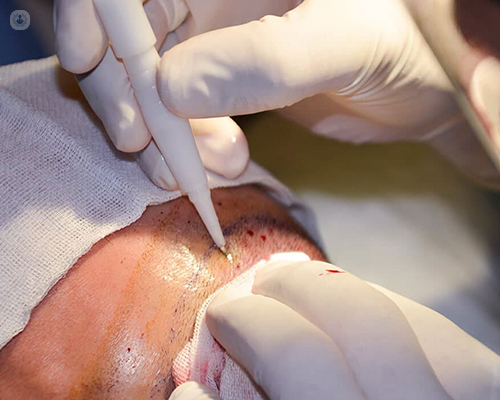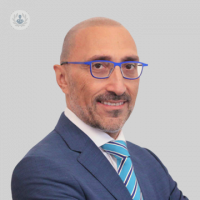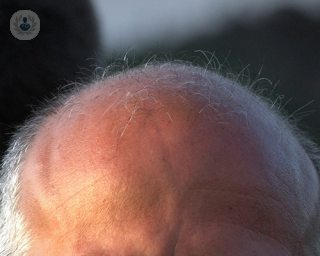Hair transplant
Dr Bessam Farjo - Aesthetic medicine
Created on: 11-13-2012
Updated on: 05-03-2023
Edited by: Carlota Pano
What is a hair transplant?
Hair transplantation, sometimes known as a hair graft, is mainly a cosmetic treatment that involves restoring a head of hair using donated hairs which are implanted onto the rest of the scalp. Patients with hair loss and baldness are increasingly turning to hair transplant treatments. There are two main types of hair transplant surgery: follicular unit extraction (FUE) and strip follicular unit transplantation (strip FUT). Hair transplants are often done with local anaesthesia.

Why is hair transplantation done?
Hair transplants are often chosen by people suffering from hair loss. Hair transplantation can be an option for men with male-pattern baldness, women who have thinning hair, or people who have lost hair due to a burn or injury.
Hair transplants are generally not advised for:
- Women with widespread hair loss
- People with keloid scars on their scalp
- People who have lost their hair due to medication (e.g. from chemotherapy)
- People without enough donor hair sites
What does hair transplantation consist of?
During a FUE hair transplant, a special punch device is used to remove individual hair grafts, one by one. These are then placed into small incisions, hair by hair. During a strip FUT, a strip of hairs and skin are removed, from the back and side of the head. This graft is then stitched onto the recipient site.
Both methods can take up to a day, but staying in hospital is not required. Sometimes, a hair transplant will be carried out in several sessions, especially if there is a large area of hair being transplanted. Local anaesthesia will ensure there is no pain during the procedure.
Preparation for a hair transplant:
Before a hair transplant, it may be necessary to shave a section of your head, however, your surgeon will do this usually.
Aftercare:
Depending on the technique used, aftercare will vary. Following the procedure, you should arrange for someone to take you home as you cannot drive for the first 24 hours. You should be able to return to work two to three days after the procedure. You will have to wear bandages for the first few days, after which, they can be removed. There may be some pain and swelling which can be controlled with anti-inflammatories and painkillers. You may also be given a course of antibiotics to avoid the risk of infection. Usually, after two to three weeks, some hairs will fall out, which is normal, and new hairs will begin to grow in their place. Complete results will be noticeable 8-12 months following your hair transplantation.
















